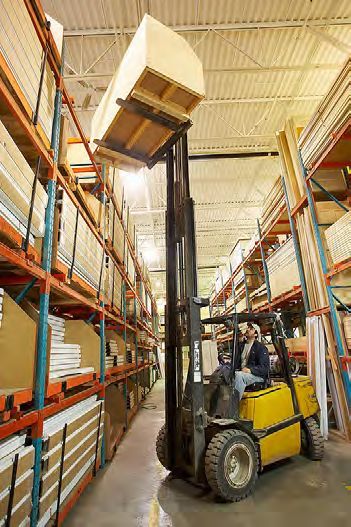Loading and Unloading the Forklift
Check out the destination:
- Is the destination flat and stable or will the load rock, tilt, or lean?
- Never place heavy loads on top of light loads.
- Observe maximum stacking quantities and orientation if printed on cartons.
Watch this short video demonstrating what can happen with a high-center unstable load.
- Do you know the load bearing capacity of your rack or storage loft destination?
- Are rack legs or support members bent or disconnected? The load bearing capacity of a damaged rack is unknown. Wait until the damaged component has been replaced before loading.
- Are racks arranged back to back with a stock behind where you will place the load? Someone may need to be in the next aisle to control access while you place the load.
- Are wooden stringers or decking laid between front and rear rack beams in good condition? They may support the load if the pallet is not properly placed on both front and rear rails.
- If you are stacking, are other pallets in the stack in good condition and capable of supporting the load in addition to what they are already supporting?
Tilt the mast backward slightly to stabilize the load and lift. Check the destination before you place the load.
- Move squarely into position in front of the rack or stack where the load will be placed.
- When ready to place the load, tilt the mast to level. Only tilt forward when the load is over the spot where it will be placed.
- Lower the forks and back away.
- Visually verify that the load is stable.
Knowledge Check Choose the best answer for the question.
2-10. Which of the following is an important consideration when checking the destination of a forklift load?
You forgot to answer the question!

